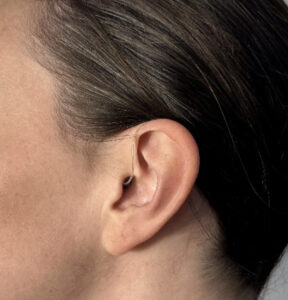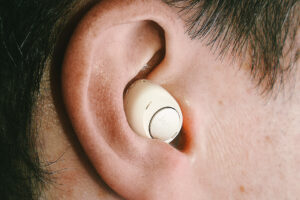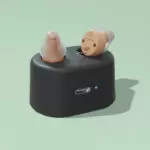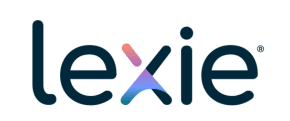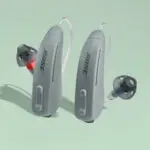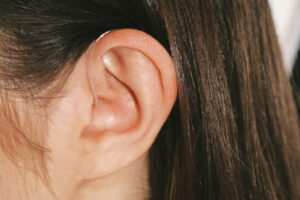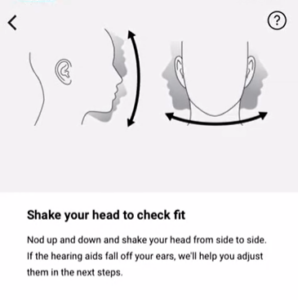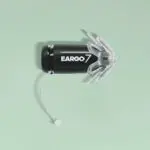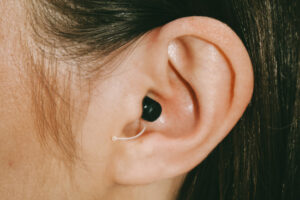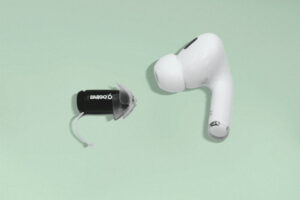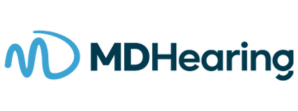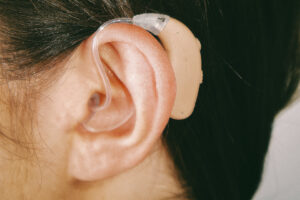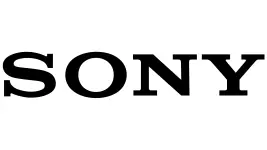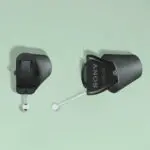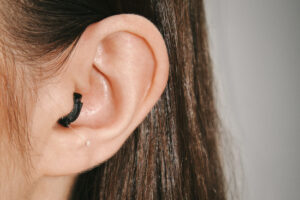Table of Contents
- Our team researched 50 prescription and over-the-counter hearing aids and tested 21 over-the-counter hearing aids to create our list of the six best OTC hearing aids.
- We surveyed 1,000 people, interviewed 25 hearing aid users, and read more than 30 scientific journals.
- The HelpGuide Handbook Team includes six hearing aid experts, of which three are audiologists.
- We’ve spent over 7,500 collective hours researching the best hearing aids available on the market.
For more information, read our hearing aids review methodology.
For decades, hearing aids were available just one way: prescription models sold by an audiologist at an in-person hearing clinic. This restrictive model kept costs high and access low, which are two of the main reasons people wait an average of 10 years to get help with their hearing loss.
Thankfully in October 2022, the Food and Drug Administration (FDA) passed a final rule permitting the sale of over-the-counter (OTC) hearing aids in an effort to lower costs and expand access.
Now that accessible and more affordable OTC hearing aids are here, it’s become easier to treat hearing loss. But OTC hearing aids are still new—and with so many brands flooding the market, it can be difficult to know where to find affordable, high-quality devices.
That’s where we come in—our Handbook Team is here to help cut through the noise. Knowing how important hearing aid use is to mental health and quality of life, we hand-tested 21 OTC hearing aids to help you find the best hearing aids for your specific needs.
We loved the clear sound in Jabra Enhance hearing aids and their barely-there feel. Other hearing aid brands, like Lexie and MDHearing, offer more affordable hearing aids compared with Jabra Enhance, while brands like Eargo and Sony sell more discreet in-the-canal options.
Best over-the-counter hearing aid overall
The Jabra Enhance is our pick for the best over-the-counter hearing aid overall because the cost is affordable, but the quality is hard to beat. During testing, we noted the clear sound, the comfortable fit, and how easy it was to use the hearing aid and its app. Customer service stood out as well, with Jabra offering three years of audiology care, along with an industry-leading three-year warranty and a 100-day free trial period.
Find the OTC hearing aid that’s right for you
- Jabra Enhance: Our top pick
- Audien: Low prices and simple features
- Lexie: Most user-friendly
- Eargo: Best hidden hearing aids
- MDHearing: Lifetime audiology support for less than $700
- Sony: Best discreet option under $1,000
What you need to know about our OTC hearing aid research and testing
If you only learn five things about OTC hearing aids, this is what you need to know.
From our tester
“Jabra Enhance Select 300 has great sound quality for different environments. I could really tell the difference between the listening programs.”
We also looked for hearing aids that demonstrated consistent quality in fundamental features, like sound clarity, setup, comfort, and ease of use. Brands that couldn’t meet those standards didn’t make it onto our best-of list.
No brand’s hearing aids performed flawlessly. For example, one of our testers ran into trouble right away with the MDHearing Volt: the Quick Start Guide didn’t explain how to turn it on.
We also completed onboarding calls with brand audiologists and talked with customer service representatives over the phone and through chat modules to accurately replicate the buying process and evaluate post-purchase support options.
Finally, we wrapped up our testing by interviewing independent audiologists, hearing instrument specialists, mental health experts, and hearing aid users to get additional perspective on OTC hearing aids.
The case for OTC hearing aids is particularly compelling. Being able to reach a wider population by increasing accessibility, simplifying the ease of fitting, and reducing the cost barriers … opens the gateway to an array of possibilities [previously inaccessible] due to exorbitant costs and lack of insurance coverage.
Shelley Singh, AuD
Compare the best over-the-counter hearing aids
1. Jabra Enhance: Best overall
Our final verdict on Jabra Enhance
Jabra Enhance makes the best OTC hearing aids on the market. With excellent sound quality, a comfortable fit, and friendly audiology staff, they are a top choice for users with mild to moderate hearing loss. Additionally, the generous 100-day trial period for Select models allows ample time for users to adapt to the aids fully, ensuring they are the perfect fit before making a final decision.
2. Audien Hearing: Lowest price and simple features
Our final verdict on Audien Hearing
Audien Hearing offers the most affordable, over-the-counter hearing aids on the market, and the devices’ functionality matches the price. None of Audien’s hearing aid models are self-fitting. Instead, the Atom and Atom Pro offer a default hearing mode, and the Atom Pro 2, Atom 2, and BTE Series offer four standard hearing modes. While the features may be too simple for some users, people with low hearing support needs and a preference for easy-to-use hearing aids may find that Audien is a good fit for them.
3. Lexie: Most user-friendly
Our final verdict on Lexie
We loved the intuitive, step-by-step guidance in the Lexie app that helped our testers set up Lexie faster than any other brand (in about five minutes). We appreciate the user-friendly design, particularly in the B2 Plus model, which includes a self-fitting guide in the app that provides clear, easy-to-follow instructions for a seamless setup. Additionally, the app’s comprehensive customer support features and the ability to conduct an in-app hearing test that tailors the device settings to individual needs make Lexie a standout choice for ease of use and personalization.
4. Eargo: Best hidden hearing aids
Our final verdict on Eargo
Eargo’s OTC hearing aids include multiple models that offer discreet support, making them our top pick for the best hidden hearing aids. Additionally, the unique opportunity to test fit with a free pair of non-functional hearing aids before purchase sets Eargo apart, providing potential users with confidence in their choice. The rechargeable batteries and water-resistant properties across various models like the Eargo 6 and Eargo 7 add convenience and durability, making these hearing aids a practical choice for everyday use.
5. MDHearing: Lifetime audiology support under $700
Our final verdict on MDHearing
With affordable prices and hard-to-find free lifetime audiology support, MDHearing is a good choice for hearing aid users who aren’t ready to invest in more expensive devices. We appreciate the rechargeable batteries—a feature that’s not often available on hearing aids at this price point. Additionally, the MDHearing lineup, particularly the NEO XS model, is praised for its compact, nearly invisible hearing aid design and upgraded noise reduction, making it an excellent choice for those seeking discreet and effective hearing solutions.
6. Sony: Best discreet option under $1,000
Our final verdict on Sony
The sound quality of Sony hearing aids rivals that of Jabra Enhance models, and the company makes the second-most discreet hearing aid on our list behind Eargo models (which cost up to three times more), but the lack of remote support may be a deal-breaker for some. Active individuals will appreciate the low-profile design of the CRE-C10 model, which fits snugly in the ear, offering comfort and stability even with movement. Additionally, the self-fitting feature, supported by a comprehensive mobile app, allows for easy customization of settings, ensuring users can achieve optimal sound quality tailored to their hearing needs.
Other brands to consider
Orka Two
Our verdict: Orka hearing aids are behind-the-ear devices that are highly customizable thanks to the brand’s focus on advanced technology. These devices use a Bluetooth-connected app and unlimited remote support from audiologists to make adjustments to the settings. There are also preset programs for ease of use. Automatic, AI-powered adjustments are made in real-time, with the device adapting to the user’s environment to support their listening needs best.
Orka hearing aids use rechargeable batteries, which have an average life of 36 hours. They are equipped for Bluetooth streaming with up to eight devices and cost $1,899 per pair.
What our testers say: “This device is for more tech savvy users. There are lots of helpful features, but they will not work for all individuals depending on their comfortability with technology.”
Brands we don’t recommend
Lucid: Difficult setup, inconsistent quality
Our verdict: Set-up was difficult with conflicting guidance, some devices have volume that’s hard to adjust, and Lucid Hearing aids didn’t sound as clear as our top choice.
We had a difficult experience setting up and using the Enlite model and encourage our readers to avoid it on account of its confusing manual. It also lacks nuanced volume controls, limiting you to two choices: normal or high. The Engage Rechargeable fared better thanks to a coherent user guide and the ability to change settings through an app, but we found the lack of magnetic charging ports frustrating. The sound quality was average at best.
The only thing Lucid Hearing has going for it is its partnership with Sam’s Club Hearing Aid Centers for in-person support. You can get easier-to-use hearing aids in the same style and for a similar price through MDHearing, though, which offers free remote audiology support for the lifetime of the device.
What our testers say: “Nothing about Lucid hearing aids stands out as to why they’d be worth buying compared to the competition. They feel cheap and offer little to no custom settings. Changing or recharging batteries isn’t as easy as with other brands due to unclear instructions and ports that aren’t magnetic.”
Pros and cons of OTC hearing aids
The introduction of OTC hearing aids has made it easier for people to get hearing aids within their budget and on their own terms. That means more people have the opportunity to treat their hearing loss and alleviate its side effects—including feelings of isolation, depression, and anxiety.
“Hearing loss can have significant effects on mental health,” said Marissa Moore, a licensed professional counselor in Missouri. “It can lead to feelings of isolation, social withdrawal, and reduced quality of life. Communication difficulties can cause frustration, anxiety, and depression. Constantly straining to hear can also lead to mental fatigue, which in turn affects cognitive function and overall well-being.”
Wearing hearing aids even helps older adults with dementia: Research shows older adults at high risk of dementia can slow their rate of cognitive decline by as much as 50 percent simply by wearing hearing aids.
Because OTC hearing aids are more accessible and affordable, they can help people get early hearing loss treatment. On the downside, the affordability of OTC hearing aids often translates to less sophisticated technology and limited in-person support options, so they may not be the ideal solution for everyone.
What we like about OTC hearing aids
- More accessible: OTC hearing aids exist to make hearing loss treatment more accessible by removing barriers associated with scheduling, attending, and paying for an audiology appointment.
- More affordable (usually): If you want to spend less than $1,500 on a pair of hearing aids, OTC is the way to go.
- Convenient adjustments: With some OTC hearing aids, the company’s audiology team can remotely adjust the settings for you according to your level and configuration of hearing loss.
Hearing aid use has been a life-changing experience for many of my patients who suffer from hearing loss. Many patients have reported increased quality of life and an improved ability to communicate with others, leading to greater normalcy and improved social interaction.
Paul Daidone, MD, medical director of True Self Recovery in Rogers, Arkansas
What we don’t like about OTC hearing aids
- Insufficient for severe and profound hearing loss: OTC hearing aids are approved by the FDA to treat mild to moderate hearing loss only.
- Some support limitations: Some OTC hearing aid companies don’t provide reprogramming services, and local audiologists aren’t always able to help with these devices.
- Less advanced technology: You’ll find fewer processing channels, which improve speech clarity and reduce background noise, in OTC devices, as well as little to no AI to support the interpretation and subsequent amplification of desirable sounds.
Buying OTC hearing aids
You can buy OTC hearing aids online or, in some cases, from brick-and-mortar stores. Your local audiology center or pharmacy may sell them too, but that’s rare for now.
Here’s more info to help you decide where to buy hearing aids and how to pay for them.
Cost
Handbook Team Tip #1
Avoid buying a model just because it has the most bells and whistles—you may be able to save money by opting for a model that has all the features you need and nothing extra.
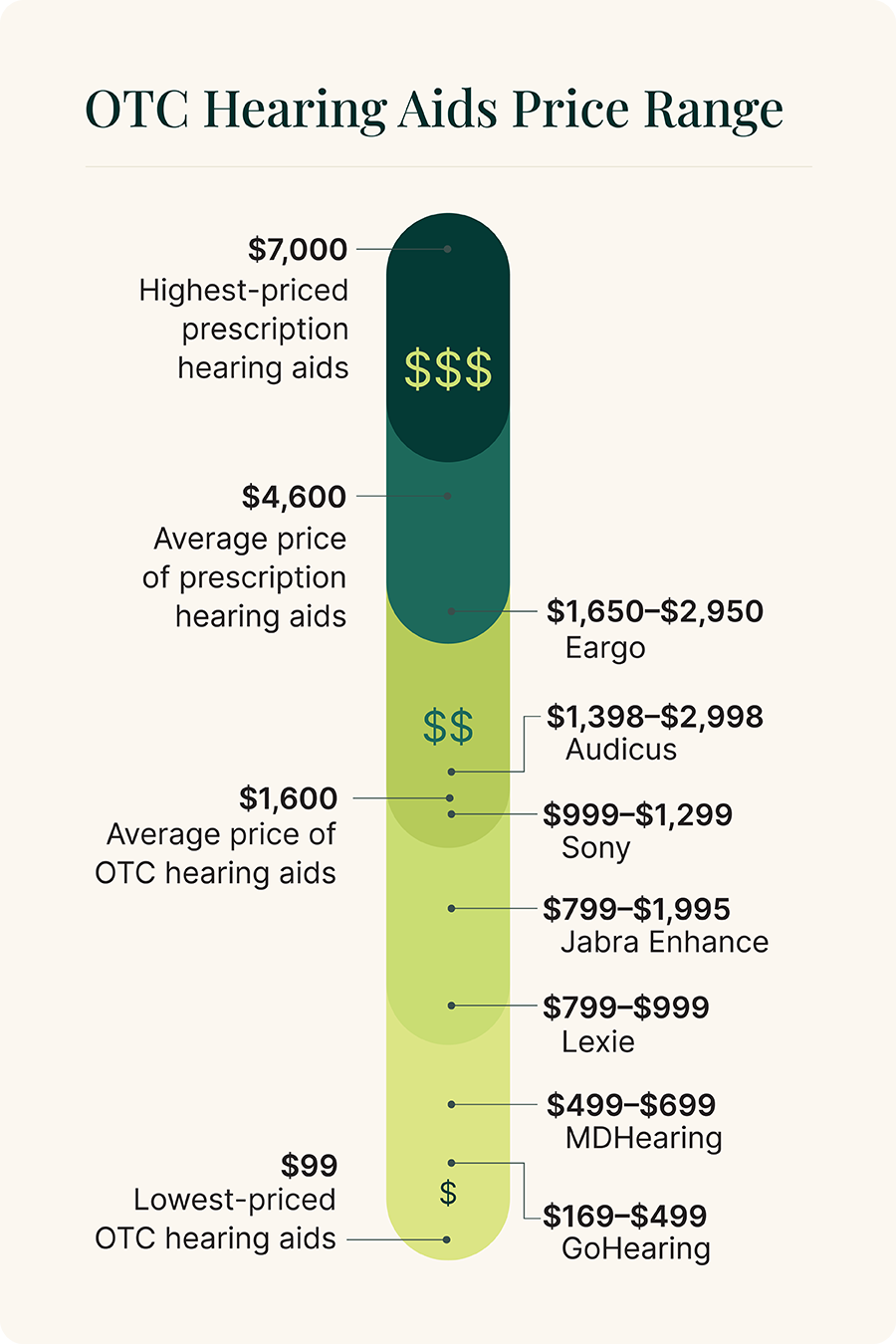
OTC hearing aids cost between $100–$3,000, which makes them more affordable than prescription models, with rare exceptions.
Despite the lower cost of OTC hearing aids, they can have surprisingly advanced features, like wind suppression, tinnitus management, and automatic sound environment adjustments.
Insurance coverage
Handbook Team Tip #2
Ask a hearing clinic to verify your hearing aid insurance coverage, as they’ll usually do it for free and will know the right questions to ask.
Unfortunately, it’s rare for insurance plans to pay for an adult’s hearing aids. You’re in luck if you live in these six states, since they require insurance to cover a portion of your hearing aids:
- Connecticut
- Illinois
- New Hampshire
- Rhode Island
- Maine
- Vermont (starting January 2024)
Take a look at the map below to see other states with age-related hearing aid coverage mandates.
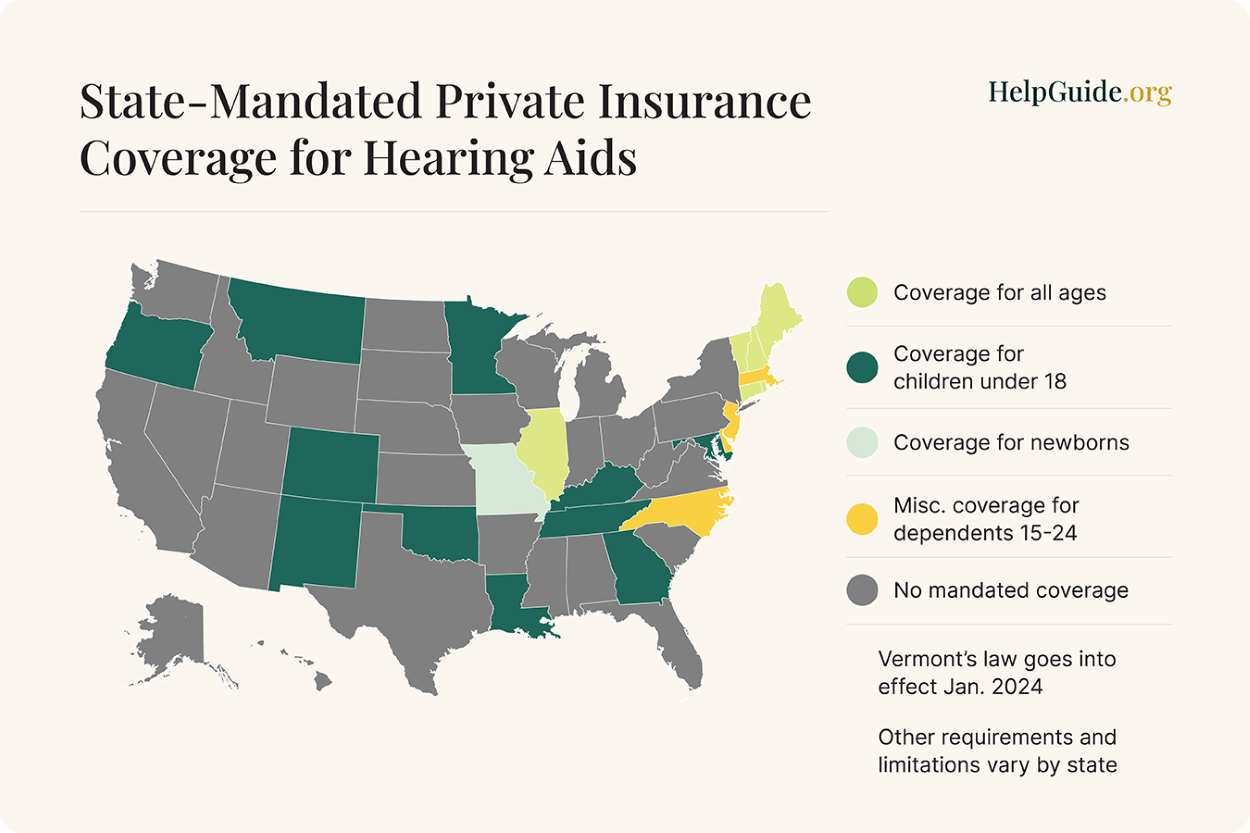
Private insurance companies in any state may give you the option to pay for a hearing care benefit, like they do for vision care. Unfortunately, some plans, like Humana Extend, only cover hearing exams, not hearing aids.
If you buy insurance through the Affordable Care Act (ACA) marketplace, your state may require providers to cover hearing aids, subject to age restrictions on ACA hearing aid coverage. View the map below to see age restrictions in your state:

Original Medicare (Parts A & B) does not pay for hearing aids, but some Medicare Advantage (Part C) plans may offer hearing benefits.
States highlighted in the map below provide hearing aid coverage for adults with Medicaid but often require a prescription, among other limitations:
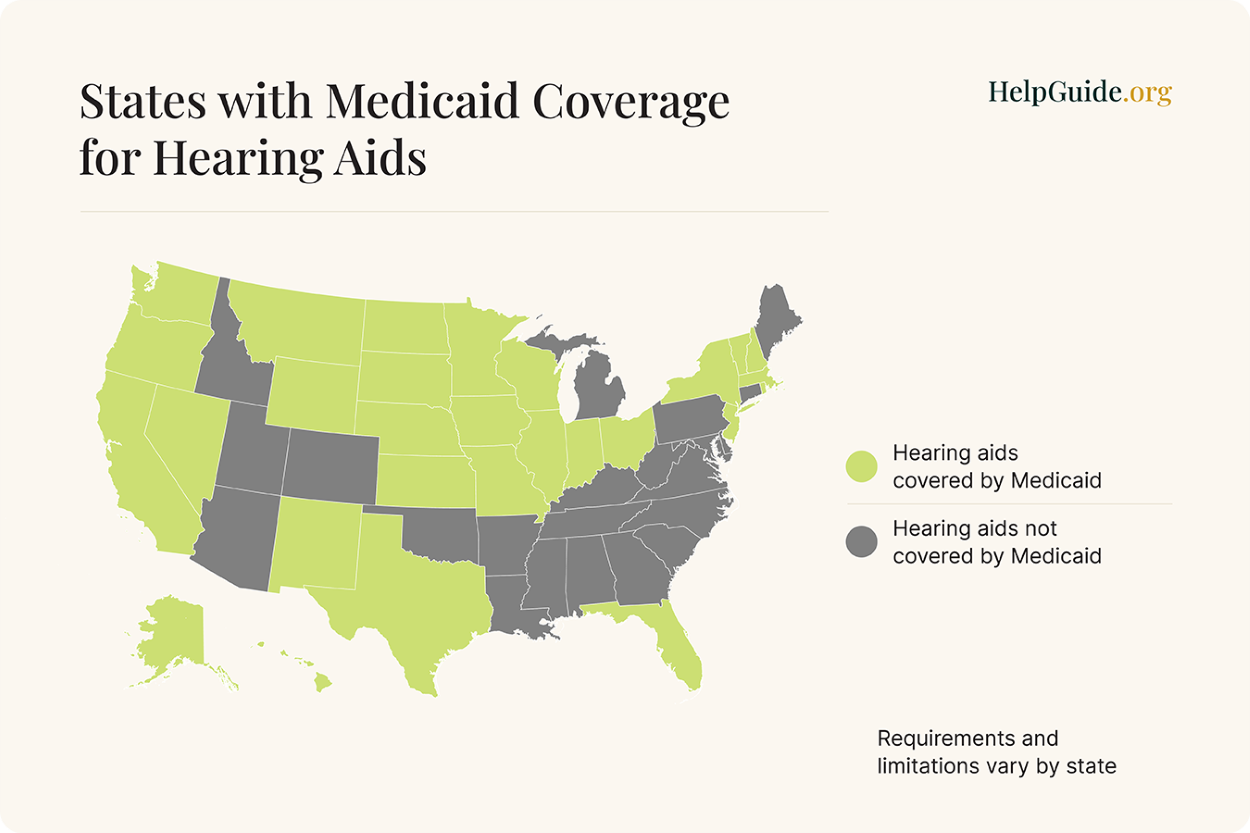
Where to buy over-the-counter hearing aids
Handbook Team Tip #3
Beware of any OTC hearing aid company that claims to have an “FDA registration certificate.” This is a common scam—the FDA doesn’t issue registration certificates for medical devices.
OTC hearing aid manufacturers sell their devices directly to consumers via the brand’s website or through third-party retailers, such as:
- Amazon.com (Audien, Go Hearing, Jabra Enhance, Lucid, MDHearing, Sony)
- BestBuy.com (Eargo, Go Hearing, Jabra Enhance, Lexie, Lucid, Sony)
- CVS.com (Go Hearing, Lexie, Lucid)
- SamsClub.com (Lucid)
- Walgreens.com (Go Hearing, Lexie)
- Walmart.com (Audien, GoHearing, Lexie, Lucid)
If you want to see hearing aids in-person before you buy, you can visit the following stores, as well as local pharmacies and medical supply stores:
- Best Buy
- Sam’s Club
- Victra-Verizon
- Walgreens
- Walmart
- Costco
How to save money
Handbook Team Tip #4
Watch for sales. OTC hearing aid companies routinely run seasonal or holiday sales. Sign up for a company’s email newsletter to be notified when products go on sale.
To save money on hearing aids, make sure you’re not paying for features you don’t want or need. For example, choosing the second feature in each trade-off below could help save you money:
- Smaller and discreet vs. larger and conspicuous
- Disposable vs. rechargeable batteries
- App vs. no app
- Bluetooth streaming vs. no streaming
If eligible, you may be able to get a free or low-cost hearing aid through the following programs and nonprofits:
- Veterans Affairs
- American Federation of Government Employees
- National Hearing Aid Project
- Lions Club International
- Miracle-Ear Foundation
- Starkey Hearing Foundation
- Help America Hear (formerly Foundation for Sight & Sound)
- Your local vocational rehabilitation agency
Financing
Handbook Team Tip #5
Read the fine print when financing through your hearing aid company—some third-party financing partners charge interest up to 36 percent.
If you’d like to split the cost of a hearing aid into monthly payments, consider buying directly through companies offering financing, like:
- Jabra Enhance: Monthly payments start at $26–$49, depending on the model, for 12–36 months through Bread Pay.
- Eargo: Monthly payments start at $26–$83, depending on the model, for up to 36 months through Bread Pay.
- Go Hearing: Financing is available for six to 36 months through Klarna.
- MDHearing: Monthly payments start at $24–$59, depending on the model, for three to 12 months through Affirm.
- Sony: Monthly payments start at $84–$109, depending on the model, for six to 12 months through Affirm.
For full terms and conditions, contact each company directly. When purchasing online, look for the financing option during checkout.
Some retailers also offer financing, but the interest rates can be as high as 36 percent, depending on your credit score:
- Amazon offers a credit card.
- Best Buy has a lease-to-own program for purchases $250 and up, plus traditional financing through its credit card.
- Walmart offers financing for three to 24 months through Affirm.
What’s the difference between OTC hearing aids and traditional hearing aids?
As their names imply, traditional or prescription hearing aids and over-the-counter hearing aids have different purchasing requirements. You need an audiologist’s approval before buying a prescription hearing aid, whereas OTC hearing aids can be bought without medical input.
OTC Hearing Aids vs. Traditional Hearing Aids
| Category | OTC Hearing Aids | Traditional Hearing Aids |
|---|---|---|
| Age range | Adults | Children and adults |
| Hearing loss | Mild to moderate hearing loss | Mild to profound hearing loss |
| Support | Remote support | Remote and in-person support |
| Price | $99-$3,000 per pair ($1,020 avg.) | $1,500-$7,000 per pair ($2,651 avg.) |
| Medicaid coverage | Ineligible for Medicaid coverage in some states | Required for Medicaid coverage in some states |
| Additional features | More basic features | More likely to have advanced features |
The FDA imposes a couple of restrictions on OTC hearing aids that don’t apply to prescription models. First, OTC devices can only be used by adults, so anyone under 18 must get a prescription hearing aid. Second, OTC hearing aids may only treat mild to moderate hearing loss, whereas prescription hearing aids may treat all levels of hearing loss.
Customer support
Another difference between OTC and traditional hearing aids boils down to the type of support available. Some OTC hearing aid companies provide free remote support from a team of audiologists, while others keep costs ultra-low by skipping this service. But remote support isn’t unique to OTC hearing aids—prescription hearing aids can be remotely adjusted too.
We talked to Dr. Reisman about the support differences between OTC and prescription hearing aids, and she explained that local audiologists can’t access the computer chips in OTC devices to make adjustments. In contrast, they can adjust all prescription brands.
Prescription hearing aids are unlocked devices that can ultimately be adjusted or programmed by any audiologist or hearing instrument specialist that services those devices in any country.
Ruth Reisman, AuD, Audiologists.org
If OTC devices need to be reprogrammed, for example, you’d have to mail them to the brand’s audiology team. With prescription hearing aids, you could make an appointment for in-person assistance and wouldn’t have to part with the devices.
Cost and coverage
Over-the-counter hearing aids are more affordable, ranging from $100–$3,000 per pair compared to $1,500–$7,000 for a pair of prescription devices. We compiled cost data from more than 30 hearing aids in each category and found that a pair of OTC hearing aids averages a little more than $1,000, whereas a pair of prescription hearing aids averages around $2,650.
If you plan to use insurance or Medicaid to help with the cost of hearing aids, you may need to choose prescription devices. Check your policy or state Medicaid laws to see if a prescription is required for hearing aid coverage.
Technology
Features like wind suppression, tinnitus management, directional microphones, automatic sound environment adjustments, and Bluetooth streaming do exist in some OTC hearing aids but are rare in discreet styles, like in-the-ear or completely-in-canal. In contrast, these features are more common in prescription devices of all styles. Our testers could tell the difference when wearing over-the-counter versus prescription models.
Although prescription devices have the upper hand in many ways, Dr. Reisman believes OTC hearing aids can work well for some people. “The performance of an over-the-counter hearing aid depends on the patient’s expectations, their degree of hearing loss, and the anatomy of their ear,” she explained. “There are some patients who do really well with [an OTC] device.”
Who are over-the-counter hearing aids for?
Over-the-counter hearing aids are for adults over the age of 18 who have mild to moderate hearing loss. If you are unsure of what mild to moderate hearing loss might feel or look like, watch for some of these signs:
- Frequently asking people to repeat what they are saying.
- Difficulty understanding whispers.
- Confusion with similar words.
- Missing syllables or highly used consonants.
- Changes in your hearing behavior, like increasing device volume levels or the need to sit closer to a speaker.
Using OTC hearing aids
Because over-the-counter hearing devices do not require a professional assessment or prescription, it’s important that you self-test ahead of time—there are plenty of free assessments available online—and understand how to set up and adjust your OTC hearing aids once you purchase them. You should also be comfortable with using technology, which often includes communicating with remote audiology support team members through video and online chats. Plus, it’s important to learn how to maintain and clean your OTC hearing aids on your own to make them last as long as possible.
When to see a specialist about OTC devices
If you’re unsure of whether you need to purchase OTC hearing aids, it’s a good idea to visit a hearing health clinic to confirm your level of hearing. A specialist will be able to give you the official green light so that you feel confident in your buying decision. Or, they can determine whether there are underlying health issues causing your hearing loss. For example, if you recently experienced a head or ear injury, have tinnitus, experience fluid in the ear, or have wax build up deep in your ear canal, you may need to treat a different issue. This could also mean meeting with another medical professional to treat a health concern that is not directly related to hearing difficulties.
Top features to look for in OTC hearing aids
A few considerations, like remote post-purchase support, are unique to the OTC buying experience.
Dome sizes and styles
To ensure a comfortable fit, hearing aid domes need to be the right size for your ear canal. Dome styles (closed or vented) can also improve sound clarity based on your type of hearing loss and whether you intend to stream audio through Bluetooth.
Because you’re fitting the hearing aids yourself, it’s important to have options readily available. Some hearing aids come with as many as nine pairs of domes to try, for example, but others come with just two.

Post-purchase support
You don’t need an audiologist’s permission to buy OTC hearing aids, but that doesn’t mean you have to avoid professional audiology support altogether. If you’re new to hearing aids, consider buying from a company that offers robust post-purchase support.
For example, Jabra Enhance and MDHearing provide free onboarding calls to explain how to make adjustments, select the right dome, and wear the devices correctly.
Also, think about whether you’d like free cleanings, free or discounted repairs, and remote adjustments.
Self-fitting capabilities
A self-fitting hearing aid connects to an app that lets you fine-tune the volume, bass, and treble on each hearing aid for the clearest and most comfortable sound. Some self-fitting hearing aids, like those made by Lexie, use the results of an in-app hearing test to suggest optimal adjustments.
You can also create and save settings for different sound environments, like noisy restaurants or windy outdoor locations, to reduce background noise and amplify speech as much as possible. To quickly activate those presets, you’ll press buttons on the hearing aid casing or use the app. A few OTC hearing aids, like the Eargo 7, analyze the sound environment and make automatic adjustments for your convenience.
Hearing aids that aren’t self-fitting come with generic presets, which keeps them affordable.

Sound technology
To ensure good sound quality, look for OTC hearing aids with these features:
- High number of processing channels
- High number of frequency bands
- Directional microphones
- Automatic environmental adjustments
- Wind management
- Feedback suppression
- Volume limiters
The number of processing channels certainly makes a difference to the quality of the hearing aid. A higher number of channels allows the hearing aid to amplify different frequencies of sound more precisely, which makes for a more natural and customized listening experience.
Peter Byrom, AuD
Battery type and life
OTC hearing aids come with rechargeable or disposable batteries, depending on the model. Rechargeable batteries are more convenient if you have limited dexterity, which can make it tricky to remove and insert tiny disposable batteries.
Rechargeable hearing aid batteries hold a charge long enough to get you through the day, but the number of hours you can get from a charge is reduced when connected to Bluetooth and other accessories. Expect to charge them at least once per day. Consider models with portable charging cases or quick-charge options for added convenience.
Use the chart below to compare the average battery life of the OTC brands we recommend:

On the other hand, hearing aids that use disposable batteries tend to be more affordable. The batteries themselves cost about 30 cents each and, according to Byrom, must be changed every three to 12 days, depending on the size:
- Size 10 lasts three to seven days.
- Size 312 lasts three to 10 days.
- Size 13 lasts six to 14 days.
- Size 675 lasts nine to 20 days.
If you’re on a tight budget, then disposable batteries may be the better option for you, but there’s no significant benefit to choosing disposable over rechargeable batteries for your hearing aid past this.
Peter Byrom, AuD
Trial period and warranty
All of our recommended hearing aids come with a 45-day trial period, with the exception of the Jabra Enhance Select series, which comes with a 100-day trial. Jocelyn Doré, AuD, said it takes about 30 to 45 days to acclimate to a new pair of hearing aids, so the average OTC trial period gives you just enough time to decide if the devices are worth keeping.
You should also look for a long (and preferably free) warranty to cover repairs or replacements. One- and two-year warranties are common among OTC hearing aids. Some companies let you pay for an extended warranty. Considering the high cost of some hearing aids, it may be worth paying a little extra to protect your investment.
Our testing experience




With FDA approval, the OTC hearing aid market experienced rapid growth with an influx of new companies. While this improves accessibility and helps drive down prices, it also muddies the waters. How do you know which products are trustworthy?
After surveying the market, interviewing hearing health experts, and speaking to real hearing aid users, we curated a list of twenty-one OTC models to test from eight brands: Audien, Eargo, Go Hearing, Jabra Enhance, Lexie, Lucid, MDHearing, and Sony. We chose these brands because they have positive reputations and represent a range of prices, styles, and features.
We also tested prescription models from Oticon, Phonak, and Starkey to experience the difference between OTC and Rx (prescription) hearing aids firsthand.
The process looked like this:
Our testers tried multiple devices and answered twenty-five questions about each. We used these answers to look for outstanding performers.
Our final verdict
Jabra Enhance has the best overall performance of the OTC hearing aids we tested, with just one other brand, Lexie, showcasing similar sound quality and ease of use. Every Jabra Enhance model emitted noticeably less background noise than other brands, fit comfortably in our ears, and was easy to set up. Plus, the company’s receiver-in-canal devices look even smaller and more discreet than comparable hearing aids from Lexie and MDHearing, with only a thin tube showing from the front and side.
That said, we know Jabra Enhance won’t be the best solution for everyone. We intentionally looked for other hearing aids that excelled where Jabra Enhance fell short, especially in terms of affordability, so you can find the best option for you.
Once you start hearing clearly again, you’ll likely experience a cascade of positive effects in how you communicate, socialize, balance, and more. An OTC hearing aid can kick-start those benefits just as much as a prescription device, but only if you have perceived mild to moderate hearing loss. Consider visiting an audiologist in person for a thorough exam, so you can find the right hearing aid for your level of hearing loss.
Frequently asked questions
Yes, inexpensive hearing aids do work, but they don’t come with some of the perks of more expensive models, like advanced background noise reduction, customizable presets, or free support from an audiology team.
Over-the-counter hearing aids are designed for the treatment of mild to moderate hearing loss, while prescription hearing aids are more technologically advanced to address hearing loss that has been diagnosed as moderate, severe, or profound. Prescription aids are also more appropriate for people who need tailor-made devices.
When shopping for good-quality OTC hearing aids, consider the brands included in this review that have been researched and tested by our team of reviewers, recommended by experts in the field, and given high ratings by customers.
Yes, OTC hearing aids are now approved by the FDA and available to purchase.
Hearing aids that treat mild to moderate hearing loss can be bought over the counter. OTC hearing aid brands include Audien, Eargo, Go Hearing, Jabra Enhance, Lexie Hearing, Lucid Hearing, MDHearing, and Sony.
If you take a hearing test with results that show you fall into the 26–70 decibel range, you have mild to moderate hearing loss. With this grade of hearing difficulty, you can look into over-the-counter hearing aids like Jabra Enhance, Lexie, and Eargo, among others featured in this review, for hearing support. If you are on the higher end of the moderate hearing loss spectrum, 70 decibels or above, consider visiting an audiologist to confirm your diagnosis. If further testing reveals you actually have moderate to severe or profound hearing loss, you may need a more advanced (prescription) hearing aid.
Jabra Enhance Select 50R, 100, and 300 stream tinnitus masking sounds through the company’s mobile app.
That said, any hearing aid may improve tinnitus by increasing sound stimuli to the brain. Hearing new sounds may also distract you from the noise, lessening the impact of tinnitus on your mental health.
While Medicare A and B do not offer coverage for hearing exams, devices, or supplies you may need, some Medicare Advantage (Part C) plans might. Contact your health insurance provider directly to find out if your policy offers any hearing health coverage options.
- American Academy of Audiology. (n.d.). Depression and Hearing Loss. Link
- American Speech-Language-Hearing Association. (n.d.). State insurance mandates for hearing aids. Link
- Bush, M., Chan, S., Hixon, B. (2017). Rurality and Determinants of Hearing Healthcare in Adult Hearing Aid Recipients. The Laryngoscope. 127(10). 2362–2367. Link
- Carpenter, M. G., & Campos, J. L. (2020). The effects of hearing loss on balance: A critical review. Ear and Hearing, 41(), 107S–119S. Link
- Del Bo, L., & Ambrosetti, U. (2007). Hearing aids for the treatment of tinnitus. Progress in Brain Research, 166, 341-345. Link
- Doré, Jocelyn. (n.d.). How long will it take to get used to new hearing aids? Advanced Specialty Care. Link
- Federal Register. (2022). Medical devices; ear, nose, and throat devices; establishing over-the-counter hearing aids. Link
- Hearing Loss Association of America. (n.d.). Medicaid. Link
- Jilla, A., Johnson, C. (2020). Population-Based Perspectives on Affordability of Hearing Aids. The Hearing Journal. 73(12). 42–45. Link
- Johns Hopkins Medicine. (n.d.). The hidden risks of hearing loss. Link
- Johns Hopkins Bloomberg School of Public Health. (2023). Hearing Aids May Slow Dementia Onset. Link
- Medicare. (n.d.). Hearing aids. Link
- National Institutes of Health. (2023). Hearing aids slow cognitive decline in people at high risk. Link
- Research and Markets. (2023). Over-The-Counter (OTC) Hearing Aids Market Size, Market Share, Application Analysis, Regional Outlook, Growth Trends, Key Players, Competitive Strategies and Forecasts- 2023 to 2031. Link
- Niazi, Y., Ejaz, B., & Muazzam, A. (2020). Impact of hearing impairment on psychological distress and subjective well-being in older adults. Pakistan Journal of Medical Sciences, 36(6). Link
- Shukla, A., Harper, M., Pederson, E., Goman, A., Suen, J. J., Price, C., Applebaum, J., Hoyer, M., Lin, F. R., & Reed, N. S. (2020). Hearing loss, loneliness, and social isolation: A systematic review. Otolaryngology–Head and Neck Surgery, 162(5), 622-633. Link
- United States Food and Drug Administration. (2023). OTC hearing aids: What you should know. Link








